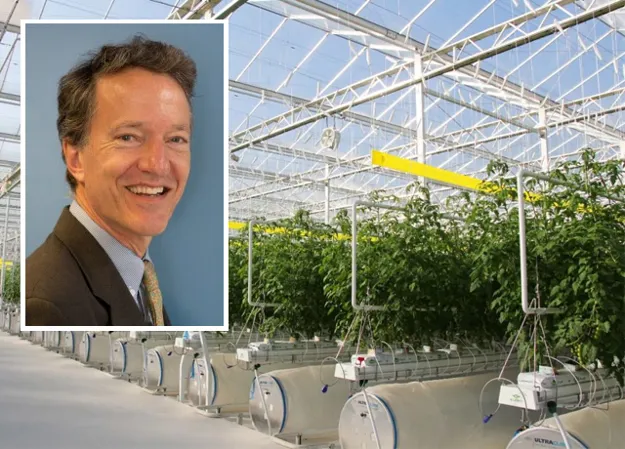"A greenhouse alone is not enough to set up a large-scale, successful horticultural project. A greenhouse is a link in the chain." so says Frederik Vossenaar of the Ministry of LNV. The Dutch government is keen to help foreign developers and governments find a way around this. "Everyone involved in food production and looking at the challenges of the future should be aware of the importance of horticulture."

Before and after a tomato is grown
"We notice that especially now that the Corona pandemic has put extra focus on food scarcity, the international demand for local production is increasing. And these are large-scale projects," says Frederik. "But for these to be successful, more is needed than a greenhouse and a grower. Things like infrastructure, energy, logistics, marketing systems are all factors you need before and after you grow a tomato."
"Growers know that the Netherlands is the horticultural heart of the world. We are enormously proud of that. We also want to make foreign governments, investors, subsidy providers and think tanks aware of this. We also need them to help us develop the large-scale horticultural projects that are actually a horticultural ecosystem."
Examples of successful cooperation
The Dutch government has joined forces with various parties in the sector. Together, they are now also targeting those international policymakers, investors, and licensing and subsidy providers who stimulate investment in the agrifood sector. In the coming weeks, three webinars will be organised in which, based on three successful projects, they will explain what else is involved besides building a greenhouse. "These are examples of successful cooperation, showing how we from the Netherlands can help with consortia to realise a large-scale and financially sound project."
On 18 May at 14:00, the Chinese High-Tech Agriculture Park in Jiashan will take center stage and the webinar on 15 June will focus on AppHarvest from the United States. On 13 July a best practice case from the Gulf States will be discussed.

Operating globally through co-creation
"These are three completely different worlds that show how we can operate globally through co-creation. In China, the drive is enormous and gigantic projects are being realised. The government's involvement is huge, as is the potential to provide 1.2 billion people with healthy food. In the US, there is a can-do mentality. A lot of vegetables are imported from Mexico. Large parties want to take this on themselves and then also in a financially sound way." Then there is the Gulf region, where water scarcity plays a major role and governments are keen to get rid of imports.
"Every market has different facets and challenges and in solving these, the knowledge of the Dutch suppliers is of great value. We work closely with the Top Sector as a public-private partnership, and agricultural councils at our embassies are doing great work. No sector has as many crossovers as horticulture. As a visible, public component in a consortium, we at the Ministry of Agriculture, Nature and Food Quality can certainly lend a hand," concludes Frederik.
The webinar series is offered by: AVAG, Dutch Greenhouse Delta, GreenTech, Netherlands Enterprise Agency, Top Sector Horticulture & Starting Materials and World Horti Center. Registration for the first webinar on 18 May is free and can be done via www.worldhortievents.nl/solution.
